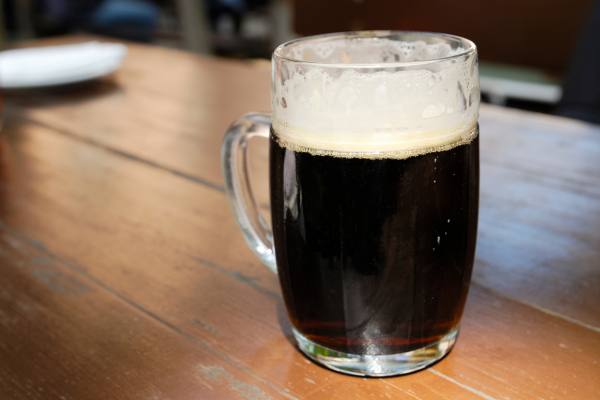As an expert brewer and a beer enthusiast, I’ve always been curious about the various beer-drinking cultures around the world. One of the most common questions I come across is:Do they drink warm beer in England?
They don’t really drink warm beer in England. The truth is that English beers are typically served at cellar temperature, which is slightly cooler than room temperature but warmer than what many other countries consider ‘cold.’
In this post, I’ll take you on a journey to explore the fascinating world of English beer and why temperature plays such an important role in the overall experience.
Before we dive into the temperature debate, let’s take a quick look at the history of English beer.
Beer has been a staple in English culture since the early Middle Ages, with ale being the most popular type of beer in the country.
Over the years, the English developed a passion for brewing, and their beers became known for their unique flavors, rich aromas, and intricate brewing techniques.
A Brief History of English Beer
Pull up a chair and settle in, my friend, because we’re about to dive into the captivating world of English beer and its unique serving temperature. Now, you might have noticed that when you order a pint of English beer, it often arrives at your table not icy cold like some other brews, but instead, at a slightly warmer temperature.
And you’re probably wondering why on earth they would do such a thing. Well, let me regale you with the fascinating story behind this beloved tradition.
To truly understand the serving temperature of English beer, we have to travel back in time to the cozy pubs and bustling taverns of old England. Picture yourself in a dimly lit room, surrounded by merry locals, eagerly raising their tankards to their lips.
These establishments were the heart and soul of the community, where friends, neighbors, and strangers would gather to unwind and share tales of the day.
In those days, beer was not just a beverage; it was a fundamental part of daily life. And here’s where the warmer serving temperature comes into play. Back in the day, England lacked the modern brewing techniques and technologies we have today. The beers were often brewed in small batches, typically stored in wooden casks and served directly from them.
Unlike the highly carbonated beers we find today, these traditional English ales were naturally conditioned and possessed a more subtle carbonation.
Now, you might be wondering, why not serve it chilled like most other beers? Well, here’s the secret: the slightly warmer temperature of English beer allows the flavors to truly come alive. Imagine taking a sip of a rich, malty ale or a velvety, full-bodied stout.
When the beer is served at a warmer temperature, it unlocks a whole array of aromas and flavors that might otherwise remain dormant if chilled. The delicate nuances of caramel, toffee, and even hints of fruitiness reveal themselves, tantalizing your taste buds in the most delightful way.

But that’s not all. The warmer serving temperature also lends itself to the sociable nature of English pub culture. Imagine sitting by the fireplace, cradling your pint, engaging in lively conversation with friends and strangers alike. The slightly warmer beer allows for a more leisurely drinking experience. It encourages savoring, slowly sipping, and relishing each flavorful drop.
Interestingly, Germany shares a similar tradition with its beer. They, too, have a preference for serving their brews at a slightly warmer temperature. This commonality between England and Germany might be attributed to historical connections and brewing practices that have been passed down through the generations.
So, next time you find yourself in an English pub, embrace the warmth of your pint and let the flavors dance across your palate. Raise your glass, toast to the rich history of English beer, and revel in the unique experience it offers. Cheers, my friend!
The English Pub Experience
One of the most iconic aspects of English culture is the pub. Pubs, short for “public houses,” are more than just a place to grab a drink; they are gathering spots for friends, family, and even business meetings.

For many, the pub experience is synonymous with enjoying a perfectly poured pint of beer. And it is here, in these cozy establishments, where you’ll notice that English beers are indeed served at a slightly warmer temperature than what you might be used to.
Why Serve Beer at Cellar Temperature?
As I mentioned earlier, English beers are typically served at cellar temperature, which usually ranges from 50°F to 55°F (10°C to 13°C).
The reason for serving beer at this temperature is to enhance the flavors and aromas that are often lost when beer is served ice-cold. Many English beers, particularly traditional ales, have complex flavor profiles that can only be fully appreciated when served at the appropriate temperature.
My Personal Experience Tasting English Beers
During my travels to England, I had the pleasure of sampling various English beers in different pubs. While I admit that it took me a little while to get accustomed to drinking beer at a warmer temperature, I quickly came to appreciate the enhanced flavors and aromas that cellar temperature provides.

One of my favorite English beers is the classic cask ale. Served from a hand-pumped tap, cask ale has a slightly lower carbonation level, which allows for a smoother and creamier texture. The warmer temperature also brings out the rich maltiness, fruity esters, and subtle hop flavors, creating a well-rounded and satisfying pint.
The Brewing Process and Temperature
The temperature at which beer is served can have a significant impact on the brewing process itself. English ales, for example, are often brewed using top-fermenting yeast, which ferments at a higher temperature than the bottom-fermenting yeast used in many lagers. This top-fermentation process creates a unique set of flavors and aromas that are best appreciated when the beer is served at cellar temperature.
The Debate Over “Warm” vs. “Cold” Beer
There’s often a debate between those who prefer their beer to be ice-cold and those who believe that slightly warmer temperatures offer a more enjoyable experience. While it ultimately comes down to personal preference, I believe that the key to enjoying any beer is understanding the unique characteristics of that particular style and serving it at the appropriate temperature to best showcase its flavors and aromas.
The Future of English Beer
English beer culture is alive and well, and the tradition of serving beer at cellar temperature continues to endure. However, as the craft beer movement gains momentum in the UK, there’s a growing interest in experimenting with different styles, flavors, and serving temperatures. This has led to an exciting and diverse beer landscape in England, with something to offer for every beer enthusiast.
Conclusion
In conclusion, while it may be a bit of an oversimplification to say that the English drink their beer “warm,” it’s true that they serve their beer at a warmer temperature than what many other countries consider “cold.”
This is due to the unique brewing processes and flavor profiles of English beers, which can be best appreciated at cellar temperature. To sum it up, here are five key facts about English beer and its serving temperature:
1. English beers are typically served at cellar temperature (50°F – 55°F / 10°C – 13°C).
2. Serving beer at this temperature enhances the flavors and aromas of the beer.
3. Traditional English ales benefit the most from being served at cellar temperature.
4. The brewing process for English ales often involves top-fermenting yeast, which ferments at higher temperatures.
5. While the tradition of serving beer at cellar temperature continues, there is a growing interest in experimenting with different styles and serving temperatures in the UK.
So next time you find yourself in an English pub, embrace the tradition and enjoy your beer at cellar temperature. You just might discover a new appreciation for the rich and complex flavors that English beers have to offer.
FAQs
Do British serve beer warm?
British pubs traditionally serve cask-conditioned ales, also known as “real ales,” at a slightly warmer temperature than many other countries, typically between 50-55°F (10-13°C). This is not exactly warm, but rather cool or cellar temperature. This temperature allows for the full flavor and aroma of the beer to be enjoyed. However, British pubs also serve lagers and other beers that are served at colder temperatures, similar to those in other countries.
What is warm beer called in England?
In England, warm beer is often referred to as “room temperature” or “cellar temperature” beer. This is because traditional British ales, such as bitter or mild, are typically served at a slightly warmer temperature (around 50-55°F or 10-13°C) compared to lagers, which are served colder. The term “warm beer” can be misleading, as these ales are not actually served warm but rather at a temperature that enhances their flavors and aroma.
Do most countries drink beer warm?
No, most countries do not drink beer warm. The preference for beer temperature varies by region and culture. Generally, countries with a strong brewing tradition, such as the United States, Germany, and Belgium, prefer their beer to be served cold or at cellar temperature (around 50°F or 10°C). In the United Kingdom, it is more common to serve certain types of beer, like ales and stouts, at a slightly warmer temperature (around 55°F or 13°C). However, the majority of beer consumers worldwide prefer their beer to be served cold.
What do they call beer in England?
In England, beer is commonly referred to as “ale” or “lager,” depending on the specific type of beer. Additionally, beer served in pubs may be called “pint” based on the typical serving size.
Which country drinks warm beer?
The United Kingdom, particularly England, is known for serving beer at a “cellar temperature” which is typically around 50-55°F (10-13°C). This temperature is considered warmer compared to the chilled or ice-cold beer served in many other countries. The British prefer this temperature because it enhances the flavors and aromas in traditional ales and bitters.




